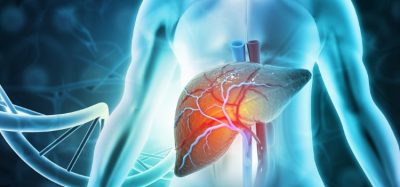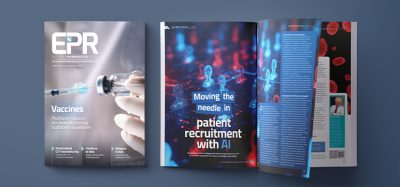France’s temporary authorisation (ATU) programme: reform implications
Posted: 21 June 2021 | Cécile Matthews (CRA), Ioanna Stefani (Charles River Associates), Paula Urruticoechea (Charles River Associates) | No comments yet
The new ATU programme may support more efficient use of healthcare spending but could it mean fewer patients receive early access to treatments? Here, experts from Charles River Associates discuss the new ATU programme reforms and how they could impact pharma.


What is the current situation?
The temporary authorisation for use (Autorisation Temporaire d’Utilisation, ATU) programme in France is intended to provide early access to medicines for patients with a severe or rare disease with high unmet need and for which no authorised therapeutic alternatives available. Since its implementation in 1994, the ATU has been a key consideration for manufacturers seeking to minimise access delays and bring life-changing treatments to patients as early as possible. While the ATU system was initially designed to ensure access to new therapies for human immunodeficiency viruses (HIV), it has progressively expanded to cover all therapy areas, including oncology, haematology and rare diseases.
Access to pre-authorised medications in France may be granted through the nominative ATU (nATU) or cohort ATU (cATU). The nATU is issued for a single, named patient at the request of the prescribing physician. However, the more frequently used cATU is issued at the request of the manufacturer to a group of patients treated and monitored according to a well-defined protocol. There are always requirements for follow-up and data collection and manufacturers must commit to submit a market authorisation application within a pre-determined period. The cATU programme offers several benefits to manufacturers. Firstly, there is the option to set a price freely, much like the one-year “free price” during the benefit assessment in Germany. This helps establish a price benchmark ahead of formal price negotiations. In addition, the cATU supports the claim of high unmet need, often leading to a higher rate on the improvement of medical benefit (Amelioration du Service Médical Rendu, ASMR) which is beneficial for price negotiations. Furthermore, the manufacturer can potentially collect and leverage aggregated real-world evidence (RWE) data from French patients to include in the submission dossier and support the health technology assessment (HTA).
As a result of expanded use of cATUs over recent years, funding of new products through the system has grown to over €1 billion a year.1 In 2020, the French ministry of health proposed several reforms to the ATU system, the full implications of which remain unclear. But it is important to question if the reforms will improve early access for patients or make the situation more challenging.
What has changed?
The most recent French Social Security law of 14th December 2020 (Article 78- La Loi de financement de la sécurité sociale, FSSL) for the healthcare plan of 2021, implemented changes to the existing ATU system. The ATU programme, previously divided into six systems, has now been grouped into two: an early access authorisation programme (Accès précoce aux médicaments, EAP) which includes the cATU and a compassionate access programme (Accès compassionnel aux médicaments, CAP) which includes nATU, among others. The reforms will come into force no later than 1st July 2021 and ATUs with an expiry date after this date will not be eligible for renewal and will have to reapply.2
What is new about the EAP?


Manufacturers will now be required to make all EAP requests to the HTA body (Haute Autorité de Santé, HAS), not to the regulatory agency (Agence nationale de sécurité du médicament et des produits de santé, ANSM).2 While the ANSM will still be consulted, the decision-making power will lie with HAS, giving it access to clinical evidence prior to European Medicines Agency (EMA) approval and dossier submission. As the EAP data will need to be collected using a standardised approach, it is possible that HAS will consider these data in the clinical assessment. If so, this could lead to faster HTA review by the transparency committee (Commission de la Transparence, TC) and quicker time to reimbursement.
Another novel aspect of the reforms is the introduction of the presumption of innovation for the products, compared with the most clinically relevant comparator.3 It is currently unclear how HAS will define and quantify innovation, but there is a risk that this may negatively impact the number of products eligible for the EAP programme, particularly for products with more immature data. In addition, it is unclear whether HAS will continue to consider unmet need as part of the decision. For example, does a small magnitude of improvement in an otherwise untreated population with poor outcomes warrant early access, or will it be reserved for those products showing ‘significant’ benefit, regardless of unmet need? As the TC considers the level of unmet need during the clinical evaluation, it is possible that this will continue to be taken into account for early access programmes.
The manufacturer is still able to set a free price for these products but the mechanism for payback has changed. Specifically, if the final negotiated price is lower than the price set during the EAP programme, manufacturers will be required to pay back the difference.2 Under the new law, the payback payment will be based on actual revenues, rather than pre-paid based on forecasted revenues.
What is new about the CAP?
Under the reforms, the bar for evidence requirements is now higher, both in terms of the quality and quantity of evidence needed to demonstrate innovation”
Like the EAP requirements, the CAP criteria are now stricter as the manufacturer needs to demonstrate that the efficacy and safety of a given product is ‘’strongly presumed,’’ as opposed to ‘’considered’’ to be favourable under the old system.2,3 The manufacturer must not only follow a well-established clinical protocol and collect data during the period required by HAS, but also needs to demonstrate that trials have started. A limit on the total number of CAP requests for the nATUs per product has been introduced and, if reached, the manufacturer has the option to apply for an EAP. This reform could lead to a lower number of patients able to benefit from a CAP, given the introduction of the new limit on nATUs. While the price of nATUs will remain confidential, it will now be set by the authorities and not by the manufacturer.4
What does this mean for pharma?
Under the reforms, the bar for evidence requirements is now higher, both in terms of the quality and quantity of evidence needed to demonstrate innovation. It is possible this could lead to fewer EAP products approved compared with the previous cATU system and subsequently to fewer patients having access to potentially much-needed treatments.
While it remains to be seen how the EAP and CAP systems will impact pricing and market access in the future, the French authorities seem to have increased the hurdles to early access. There appears little benefit to manufacturers, except potentially the ability to leverage RWE data to help secure faster time to reimbursement. They may also face lower sales opportunities under the CAP programme versus the previous nATU.
Under the reforms, fewer products are likely to be approved compared with the previous ATU system. For many years, France has claimed its early access programme is the most generous and fairest for patients in Europe. Will this still be the case in the future?
About the authors
Cécile Matthews, Vice President at Charles River Associates, contactable at [email protected]
Ioanna Stefani, Senior Associate at Charles River Associates, contactable at [email protected]
Paula Urruticoechea, Consulting Associate at Charles River Associates, contactable at [email protected]
The views expressed herein are the views and opinions of the authors and do not reflect or represent the views of Charles River Associates (CRA) or any of the organizations with which the authors are affiliated.
About CRA and the Life Sciences Practice
CRA is a leading global consulting firm that offers strategy, financial and economic consulting services to industry, government and financial clients. The Life Sciences Practice works with leading biotech, medical device and pharmaceutical companies; law firms; regulatory agencies; and national and international industry associations.
References
- Haering M. French Early Access Compassionate Use Program ATU: Still an Eternal Flame? [Internet]. ResearchGate. 2019 Available from: https://www.researchgate.net/publication/330223086…
- LOI n° 2020-1576 du 14 décembre 2020 de financement de la sécurité sociale pour 2021 (1) [Internet]. Legifrance.gouv.fr. 2020. Available from: https://www.legifrance.gouv.fr/jorf/id/…
- LFSS pour 2021 : les points clés dans le domaine des médicaments [Internet]. Editions-legislatives.fr. 2020. Available from: https://www.editions-legislatives.fr/actualite/lfss-pour-2021…
- Assemblée Nationale. Projet de loi de financement de la sécurité sociale nº 2296 pour 2020 [Internet]. 2019. Available from: https://www.assemblee-nationale.fr/dyn/15/textes/l15b2296…









